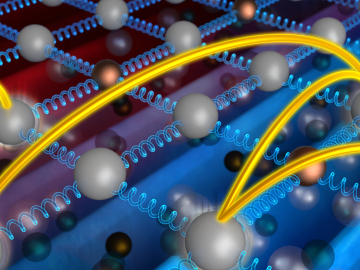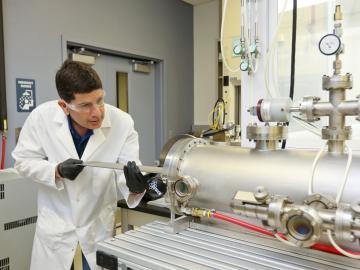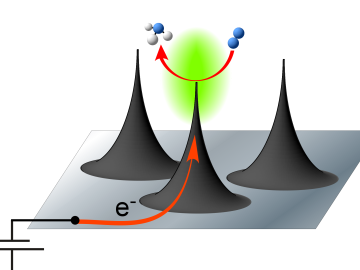
Filter News
Area of Research
- (-) Materials (23)
- Advanced Manufacturing (1)
- Biological Systems (1)
- Biology and Environment (1)
- Clean Energy (12)
- Climate and Environmental Systems (1)
- Computational Biology (1)
- Energy Frontier Research Centers (1)
- Fuel Cycle Science and Technology (1)
- Neutron Science (11)
- Nuclear Science and Technology (6)
- Nuclear Systems Modeling, Simulation and Validation (1)
- Sensors and Controls (1)
- Supercomputing (10)
News Type
Media Contacts

Scientists at the Department of Energy’s Oak Ridge National Laboratory induced a two-dimensional material to cannibalize itself for atomic “building blocks” from which stable structures formed. The findings, reported in Nature Communications, provide insights that ...

Orlando Rios, a researcher at the Department of Energy’s Oak Ridge National Laboratory, has been named a winner of a HENAAC Award, given by Great Minds in STEM, a nonprofit organization that focuses on STEM education awareness programs

Kimberly Jeskie and Michelle Kidder of the Department of Energy’s Oak Ridge National Laboratory have been named 2018 American Chemical Society (ACS) fellows. ACS is a professional organization focused on the advancement of chemistry enterprise and the improvement of...


StealthCo, Inc., an Oak Ridge, Tenn.-based firm doing business as Stealth Mark, has exclusively licensed an invisible micro-taggant from the Department of Energy’s Oak Ridge National Laboratory. The anticounterfeiting technology features a novel materials coding system that uses an infrared marker for identification.



The Department of Energy’s Oak Ridge National Laboratory is now producing actinium-227 (Ac-227) to meet projected demand for a highly effective cancer drug through a 10-year contract between the U.S. DOE Isotope Program and Bayer.




